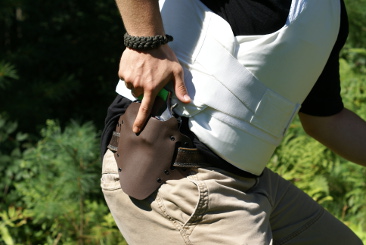|
|
| The Stab or Bullet Proof Vest to Protect Corrections Officers at Work |
| By Matthew Gay, SafeGaurd Clothing |
| Published: 11/24/2014 |
 The United States National Law Enforcement Officers Memorial carries the names of more than 520 corrections officers, with more than 200 of these from the past 30 years (roughly a quarter of these deaths resulted from stabbings). For the brave men and women who embark on this career, the risk of assault in the line of duty is incredibly high – approximately 8,000 officers are attacked each year. Despite the strict policies imposed in many prisons, inmates can still wield deadly power, whether they get their hands on a weapon or craft their own.
The United States National Law Enforcement Officers Memorial carries the names of more than 520 corrections officers, with more than 200 of these from the past 30 years (roughly a quarter of these deaths resulted from stabbings). For the brave men and women who embark on this career, the risk of assault in the line of duty is incredibly high – approximately 8,000 officers are attacked each year. Despite the strict policies imposed in many prisons, inmates can still wield deadly power, whether they get their hands on a weapon or craft their own.
As a corrections officer, you spend much of your time surrounded by some of society's worst individuals: killers, thieves, rapists – you need to stay alert at all times, and be prepared for any eventuality. Body armor is essential to protect you from the various threats posed by inmates, even if you never face a life-threatening situation, but which is best to help keep you safe from serious injury? Blades, Shivs, Guns: Handling all Threats The National Institute of Justice (NIJ) tests and rates body armor, and assigns each vest a specific level based on the amount of protection it offers against the three main threats: bullets, blades, and spiked weapons. There is no one vest which provides complete protection across all three – instead, you need to find the vest which will defend you from the level of danger you expect. Edged Blade and Spiked Weapon Protection The biggest threat correctional officers face is a sharp object. Prisoners can fashion spiked tips from most everyday objects, including toothbrushes or shards of glass – almost any sharpened object can prove fatal when applied with enough force. While cell and body searches can help you find these improvised weapons before they can be used, sometimes, prisoners are skilled at keeping them hidden, and will use them with deadly effect, whether to demonstrate their cred to other inmates or to get revenge on a particular officer they feel has disrespected them in some way. Stab proof vests and spiked weapon vests offer protection against sharp objects of different types. A stab (or edged blade) vest features multiple layers of Kevlar, with a tight weave to generate friction against a blade, stopping it from tearing through to flesh and bone. These are produced in three levels, with the highest able to protect against particularly ferocious attacks and larger blades. A spiked weapon vest generally features a Kevlar weave even tighter than that found in stab proof vests, to trap any pointed tips between its fibers before they can pass through (as they would in standard clothing, or possibly bulletproof vests). As attacks with spiked weapons are generally made with a singular point of impact – as opposed to a blade, which may be wielded in a slashing motion – the multiple layers and weave absorb the energy used. Most vests will offer protection against blades, spikes, and bullets, but at varying levels, so be sure to check the rating a vest carries to ensure it will cover the severity of threat you expect. And what about a bullet proof vest? You're less likely to face gunfire in prison, though it can never be completely ruled out: an inmate may seize control of your firearm, either in a surprise attack or a riot situation. Should this happen, a bullet proof vest will stop specific rounds according to its rating level – bullet proof vests vary from levels I, IIA, II, IIIA, III, and IV, with the latter two classed as hard armors, carrying plates as well as Kevlar. Armor can be worn over or under your uniform. Overt vests are the standard type, with a bulkier design, while covert bullet proof vests are thinner and more light-weight, with breathable materials for more comfort during prolonged use. Ballistic protection of the higher levels can only be worn as an outer layer, given the additional density and plates. While improvised weapons posing the biggest risk to correctional officers, you should still keep ballistics vests available, should inmates get their hands on firearms. However, stab and spiked weapon vests are more likely to prove essential, so always have one ready for each shift. Stab vests have the option to add spiked protection, to keep you covered against both threats in one vest, so check the range of choice your supplier offers. Matthew Gay has been in the ballistics body armor industry for the last seven years and is an expert in body armor and bullet proof vests for SafeGuard Clothing LLC, an American based bullet proof vest company. His ultimate goal is to better educate and advise law enforcement officers about available protection options in order to increase their safety. He can be reached at mgay@safeguardclothing.com. |
MARKETPLACE search vendors | advanced search

IN CASE YOU MISSED IT
|


Comments:
No comments have been posted for this article.
Login to let us know what you think